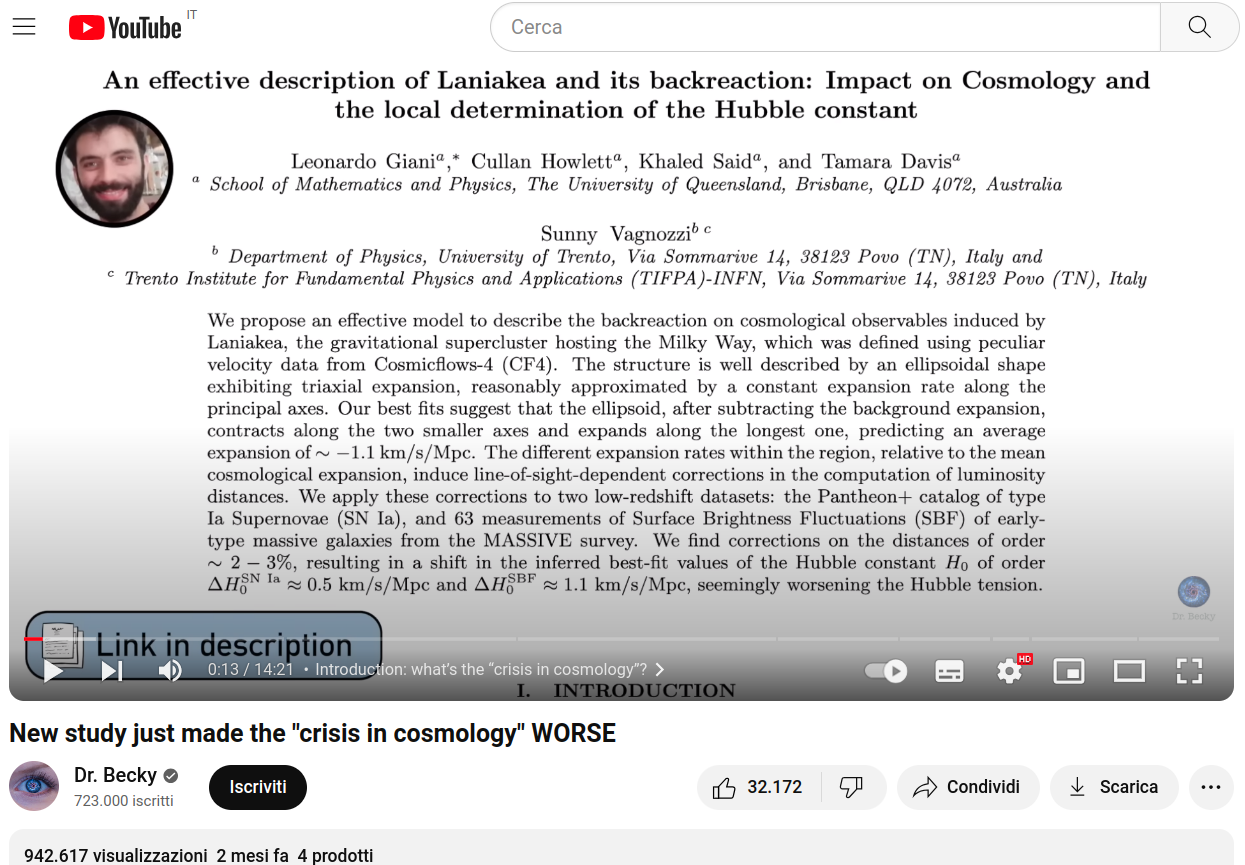We are delighted to have Leonardo (Leo) Giani visiting us once more! Leo is a postdoc at the University of Queensland, where he is working on a bunch of very interesting things gravity- and cosmology-related, including our recent work on Laniakea. We took the opportunity to catch up on a few ideas which had been hanging around (and are turning into student projects), while Leo also gave a seminar by the title of “Cosmology from the point of view of an almost spherical cow”.
Media INAF coverage for Laniakea paper
Media INAF, the official news bulletin of INAF, the Italian National Institute for Astrophysics, posted a very nice interview to Leo Giani discussing the results of our Laniakea paper recently published in JCAP. The interview is in Italian, but Google translate does a good job, and you can read it here:
www.media.inaf.it/2024/02/12/laniakea-tensione-hubble/
Enjoy the read, and once more excellent job on this paper Leo!
YouTube videos on our Laniakea paper
A number of well-known YouTubers have provided in-depth coverage of our Laniakea paper over the past two months, with their videos tallying up over a million views! Three stand our particularly:
Anton Petrov - link
Dr. Becky (Rebecca - Becky - Smethurst) - link
PBS Space Time (Matt O’Dowd) - link
I found all three to be excellently presented, and rather accurate scientifically. Funnily enough, I didn’t come across them myself, but they were pointed out to me by three different students (“Prof., your work is on YouTube” 😅). I really enjoyed watching these videos, and I hope you do too!
Laniakea and the Hubble tension
Extremely excited about my latest work with Leo Giani, Cullan Howlett, Khaled Said, and Tam Davis (all four from the University of Queensland), where we study the impact of Laniakea, the supercluster hosting the Milky Way (also known as our home in the Cosmos) on local cosmological measurements and in particular measurements of the Hubble constant. Our initial hope was that taking into account the local inhomogeneities and anisotropies induced by Laniakea could help alleviate the Hubble tension - surprisingly, we found the opposite! The reason in short is that Laniakea is on average overdense compared to the cosmological background in which it resides, so its effect is the opposite of the prototype one would need to alleviate the Hubble tension locally (e.g. a void) - in other words, if one accounts for Laniakea’s impact on distances when inferring the Hubble constant locally, one should find an even higher Hubble constant, by an amount which we quantify exactly. Congratulations to Leo, who did basically all the heavy-lifting on this paper (incidentally this is what we were working on when he visited), which I expect can become a very important one! You can read our results in the preprint we just posted on arXiv: 2311.00215.
Visit by Leonardo Giani
More visitors! This week we have Leonardo (Leo) Giani, currently a postdoc at the University of Queensland, visiting us for a couple of days. Leo and I are working on a very exciting project, which (spoiler) has to do with Laniakea, our home in the Cosmos, while also discussing other ideas more or less related to dark energy and cosmological tensions. Leo will also be delivering a seminar by the title of “Doctor suggests a new diet for Non-local gravity”. Welcome Leo!



